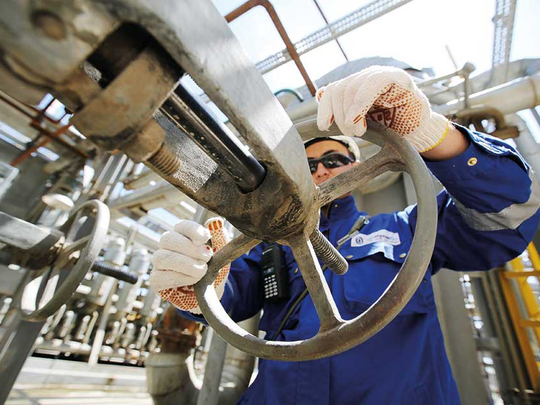
London, Kuwait: Opec and its allies are pumping half a million barrels a day below the target they set two months ago as output drops in countries from Iran to Venezuela.
The group is currently over-complying by 29 per cent, meaning it’s pumping less than it pledged. While there won’t be any new production proposal at a meeting this weekend in Algiers, a renewed pledge to bring the group back to 100 per cent compliance with targets would allow Saudi Arabia to open the taps.
Opec+ officials are in Algiers to review production figures ahead of a meeting of the Joint Ministerial Monitoring Committee on Sunday, a group that includes the oil ministers of Saudi Arabia and Russia and observes producers’ compliance. Officials are so far not discussing any proposal beyond a June agreement to achieve 100 per cent compliance with quotas initially established in 2016, the delegates said.
Oil prices have climbed about 18 per cent this year amid mounting concern that dwindling production in some countries will cause a shortfall. Declines in Iran, Venezuela, Kazakhstan and Mexico are largely to blame for the over-compliance in August, delegates said. Yet divisions in the Opec are making it almost impossible to agree on collective action to cool the rally.
While Saudi Arabia — along with non-Opec ally Russia — is eager to temper prices with more supply, Iran feels such moves would steal the market share it’s losing to US sanctions.
While delegates attributed the August compliance figure to declines in certain nations, output estimates from the International Energy Agency suggest a figure closer to 100 per cent for August. In any event, the so-called JMMC has no mandate to decide on how output increases will be shared out to reach full compliance, delegates said, adding that the decision will be taken at the next ministerial meeting in Vienna.
- Gene McGillian | Director of market research at Tradition Energy
Meanwhile, oil prices ended the week giving back most earlier gains after news that major producers would consider additional supply a day after US President Donald Trump again blasted Opec.
Investors grappled with whether the Opec and non-Opec producers will offset a shortfall from Iran once US sanctions go into full force November 4. Major producers are scheduled to gather in Algeria on Sunday.
“The question is just how much oil is going to be taken off the market with US sanctions on Iran,” said Gene McGillian, director of market research at Tradition Energy. Compounding declining production in Venezuela, Iran’s production cuts could lead to a much tighter supply picture, he said. “I think that the market is building up energy for another try at multi-year highs.”
Global benchmark Brent crude settled 10 cents higher at $78.80 (Dh289.39) a barrel.












